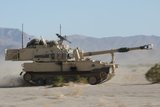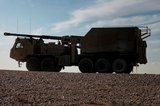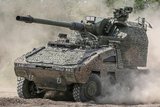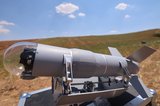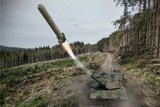EDA looks to increase artillery accuracy
The European Defence Agency (EDA) has detailed the results of its Course Correction Fuze (CCF) project, which was carried out to increase the accuracy of artillery systems used by member states' armed forces.
The CCF project was initiated in 2012. The aim of the work was to develop common technical knowledge on cost-effective and affordable solutions for reducing ballistic dispersion and enhancing the accuracy of artillery rounds, by introducing a new type of fuze.
The project has resulted in a Common European Requirements document for CCF being developed and distributed to participating member states' capability and armaments authorities in late 2016. It was also recognised that there is a need to have a harmonised approach to the challenge of integrating, testing and evaluating CCF into existing and future artillery systems in order to generate costs savings.
A dedicated investigation on CCF integration with artillery systems in the EU was developed during 2016 and successfully delivered in early 2017. Phase one of the investigation was primarily devoted to the collection of information on available CCF solutions, artillery systems and ammunition in the EU. Five of the identified CCF solutions were selected, some of which use airbrakes to reduce the down range dispersion, while others use fixed or movable canards that reduce both down range and cross range dispersion.
Phase two consisted of an analysis of those five CCF solutions and their integration into both the artillery systems and the ammunition used by the participating member states. Phase three of the project focused on developing conclusions and recommendations in view of identifying future opportunities for cooperation.
Among the main conclusions is that there are many opportunities for cooperation, pooling and sharing despite the fragmented picture of artillery systems used by European armed forces. Several countries use the same type of artillery system and, therefore, can easily share and follow the same CCF integration steps.
Furthermore, opportunities for collaboration even exist for countries using different systems for which at least some synergies can be found in terms of similar subsystem characteristics such as calibre, fire-control software or ammunition types.
In a broader perspective, the joint development of ballistic calculation software and fuze setter standards and the definition of interfaces and data protocols for CCFs were also recommended to achieve an efficient integration in artillery systems. Specific work strands were identified and an action plan has been proposed. It also became clear that the currently ongoing review of the Capability Development Plan should take into account future CCF integration into artillery systems.
More from Land Warfare
-
![US Army seeks industry support to prepare acquisitions of Group 4+ UAVs]()
US Army seeks industry support to prepare acquisitions of Group 4+ UAVs
The US Army is keen to hear about vendor designs, strategies and potential hardware and software solutions to inform requirements for procurement efforts.
-
![Dedicated drone munitions could unlock modular mission potential]()
Dedicated drone munitions could unlock modular mission potential
Top attacks have proven effective against heavily armoured vehicles in Ukraine. A new family of uncrewed aerial system-delivered munitions is looking to press that advantage further.
-
![Companies look to tank-launched guided projectiles for non-line-of-sight effects]()
Companies look to tank-launched guided projectiles for non-line-of-sight effects
While integration of guided weapons on modern armoured vehicles usually takes the form of a podded launcher on the turret exterior, recent developments suggest the concept of firing missiles from a tank’s main gun could be seeing a revival.









